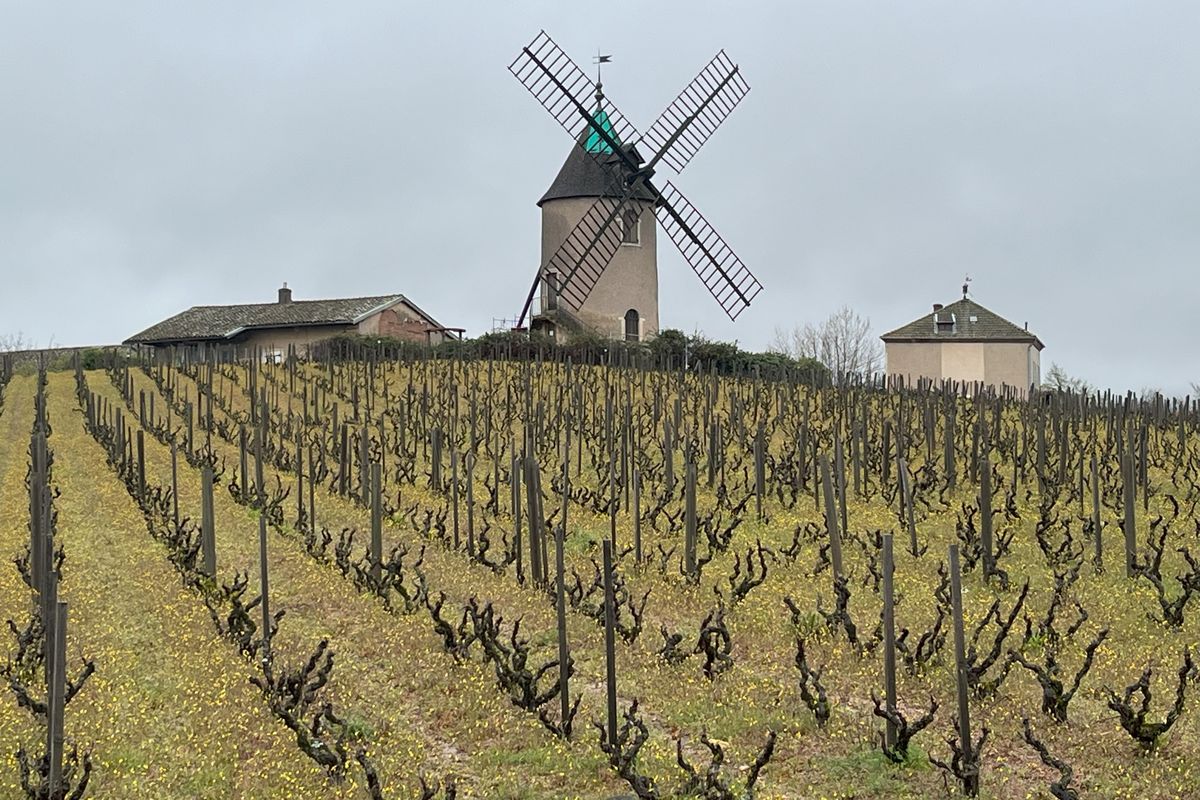Beaujolais, known for casual wine, wants to be taken seriously

Beaujolais wants to show you its serious side. For decades, this region between Burgundy and Lyon was known for juicy, grapey Beaujolais Nouveau, rushed to market after the harvest for a global party. It was tasty, it was fun and it lasted a few weeks.
Beaujolais Nouveau became synonymous with the name of Georges Duboeuf, the self-styled King of Beaujolais, who passed away in early 2020 at age 86. But wine lovers, sommeliers and writers have long sought out wines from Beaujolais’ 10 cru appellations – Saint-Amour, Juliénas, Chénas, Fleurie, Moulin-à-Vent, Chiroubles, Morgon, Régnié, Côte de Brouilly and Brouilly – for their quality and affordability, typically in the $25-$40 range.
That’s a broad-brush description. Now, the region’s winemakers are trying to add detail.
On Wednesday, the vignerons of Moulin-à-Vent will ask the French regulatory authorities to grant premier cru status to 14 of their best lieux-dits, or vineyard sites. The timing is no coincidence, for on April 17, 1924, Moulin-à-Vent became the first Beaujolais area to be named an Appellation d’Origine. In 1936, it won the more official, national Appellation d’Origine Controllée, or AOC. Now, Moulin-à-Vent joins Fleury and Brouilly, which filed for premier cru status last year. The petitions will take years before any decisions come – this is bureaucracy, after all, and French bureaucracy at that. Meanwhile, the vignerons will try to convince us that their wines deserve a promotion.
Some background: Beaujolais is made with the gamay grape, which was banned from Burgundy by Philip the Bold, then Duke of Burgundy, in 1395, in favor of his preferred pinot noir. This may have initiated Beaujolais’ status as second-tier to its famous northern neighbor. The region’s soil is typically described as granite, compared to Burgundy’s prestigious limestone. Recent advances in soil science have added detail to the area’s soil map: Moulin-à-Vent also has volcanic, sedimentary, marl and limestone soils, though the proposed premier cru sites are on granite. Initiated in 2009 throughout Beaujolais, these soil studies have fueled the drive for premier cru status by mapping the connection between soil and wine.
There’s also a connection to weather. “In cooler years, the wines can resemble the pinot noirs of Burgundy,” says Brice Laffond, winemaker at Château du Moulin-à-Vent. “In riper years, they taste more like the syrahs of the northern Rhône.” With climate change, that Rhône link may become stronger.
Moulin-à-Vent’s quality was on display when I visited the region recently. The current releases from 2020 were consistently good, earthy wines with strong extraction and body suggesting an ability to age for several years. Château des Jacques, a venerable estate owned by the Burgundy giant Maison Louis Jadot, impressed with its classic velvety profile. Château du Moulin-à-Vent, near the iconic windmill that gives the cru its name, takes a softer approach, expressing comfort and quiet confidence rather than power. The wines of Domaine de Colette channeled Montmorency cherries, while Domaine des Vieilles Caves baked those cherries into a clafoutis. Yet all showed a similarity that said Beaujolais cru, and specifically Moulin-à-Vent.
Tradition is grand, but so is innovation. At Domaine de la Sionnière, Estelle and Thomas Patenôtre complement their joyful wines with a compelling, brooding, earthy cuvee aged 18 months in an amphora. And Denis Falaize, who left a career in chemical engineering to make wine closer to his family in Lyon, makes a lighter version of Beaujolais under his label, Zest Of.
Not everyone agrees with the push toward higher status for Moulin-à-Vent. “It’s too early,” said Charlotte Perrachon, who seems to be coaxing the Earth to reveal its soul with her wines at Château Bonnet. Premier cru status for Moulin-à-Vent and other appellations could make it harder and more expensive for younger winemakers to buy land and establish their own domaines, she said.
Others believe premier cru status will create opportunities for the region as a whole. “It will show the diversity of our appellation and that we’re not just a small area that produces one wine,” says Nicolas Loron of Domaine des Fontaines.
A crucial attribute for convincing the bureaucrats in Paris that these 14 vineyards are worthy of premier cru status is the ability of the wines to age. Beaujolais crus have never been ephemeral and temporary like nouveau, yet they haven’t captured our imaginations as age-worthy either. During my visit, I tasted several older vintages, most notably a fresh, vibrant 1978 Château des Jacques Clos des Rochegrès and a 1967 from Château du Moulin-à-Vent that sent aromas of truffles and wild mushrooms soaring from the glass.
We may not have many opportunities to enjoy such older wines, but there are plenty of 2020s and other recent vintages to explore. And they are delicious – we don’t need a government agency in Paris to tell us that.